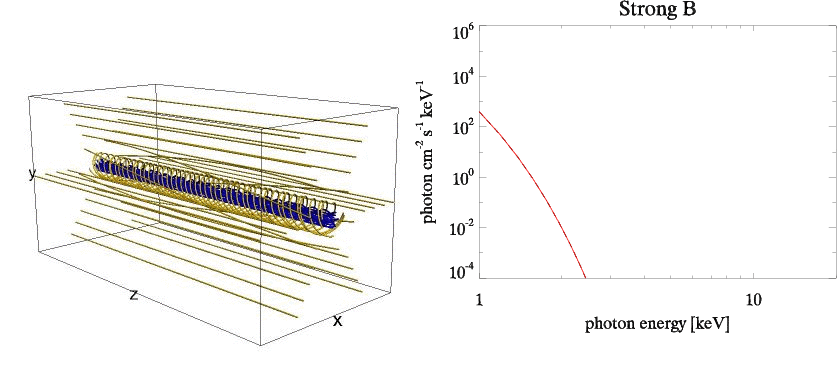The Sun is a cosmic object possessing a wide variety of dynamic processes ranging from turbulent convection, to intense surface magnetism and interaction with their environment via magnetic effects, particle winds or tides. The comparison between simulation and observation is a tool to unravel the mysteries of these processes. These high-performance simulations use the most powerful supercomputers in France (CCRT, GENCI), and in Europe (PRACE).
Simulation of the environment of the star HD 189733, a star slightly less massive than the Sun around which orbits a known exoplanet. We see the magnetic field of the star extending into its environment where the stellar wind flows. The transparent structure represents the surface of Alfvén, the distance at which this flow passes the 'magnetic wall' (equivalent to the sound barrier). For the Sun, this surface is now thought to be between 10 and 20 solar rays. One of the goals of Solar orbiter is to understand, for the Sun, the magnetic connectivity between the heliosphere and the surface of our star.
credit: Antoine Strugarek (DAP), 2018
Simulation of flows in the interior of the Sun. We see that our star is decomposed into two zones. Outside, we see turbulent flows called 'convective' with fine descending structures (in blue) and large ascending structures (in yellow/orange). Inside, the Sun is stably stratified and we see the propagation of gravity waves excited by the turbulence of the outer zone. These waves, when detected, allow a seismic diagnosis of the star housing them and thus allow us to understand its internal structure. The magnetic field of the Sun, produced by dynamo effect, is generated within our star and then structures the environment all the way to our Earth. Understanding the processes at its origin is therefore at the heart of the Solar Orbiter mission.
credit: Alvan et al. 2015, CEA

X-ray emission from a coronal loop
credit: Allan Sacha Brun, Nicole Vilmer, Rui Pinto - 2015
3D simulation of the solar interior showing the processes at work behind the 11-year solar cycle. The Sun's turbulent convective motions are represented by the blue (descending) and red (ascending) structures, which carry the Sun's luminosity to its surface. The magnetic field of our star, which shows an 11-year cycle, is represented in the interior of the Sun by the white/blue ribbon that now evolves within the turbulent structures that surround it. Outside the Sun, we represent an extrapolation of this same magnetic field to materialize its influence on the Sun's environment. During this video, the Sun's magnetic field undergoes a complete reversal, changing at the solar pole from blue to yellow.
credit: Antoine Strugarek (DAP)


